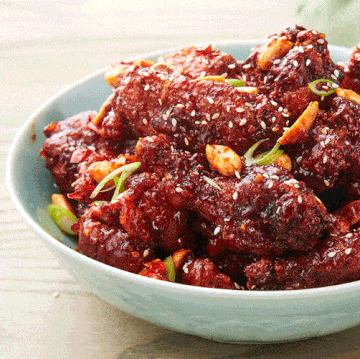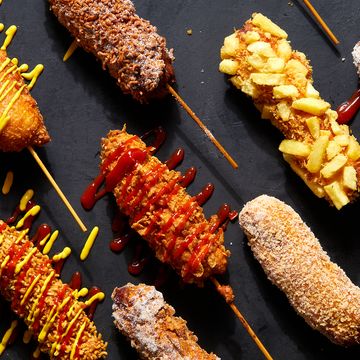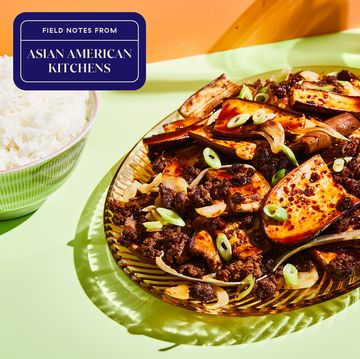
Yields:
1 serving(s)
Prep Time:
5 mins
Total Time:
10 mins
French omelets have a reputation for being ridiculously difficult to execute, even with the most experienced chefs. Perhaps it's all the qualifications for a perfect French omelet: the outside should be smooth and pale, while the interior should resemble a luxurious soft scramble. It should not take on any color, and it should be served seam-side down, in an even, torpedo-like shape. Sounds intense? Maybe a little. With some practice, we know you can nail it. Once you do, it will be the most impressive breakfast and brunch to serve up to guests—you'll look like an absolute pro in the kitchen.
Below are some tips to help you achieve oeuf perfection, but First things first:
What makes a french omelet different than a regular omelet?
The two omelets differ in technique and presentation. For french omelets, you're going to shake your pan vigorously while your eggs are cooking while stirring rapidly with a fork. After 1-2 minutes, you should spread your eggs in an even layer before folding and rolling the omelet. Smooth, pale and resembling a soft scramble, the omelet is then served seam-side down. American omelets will have some color ,and don't require any rapid stirring in the pan. American versions are also usually folded in half, and stuffed with other ingredients like cheese, vegetables or bacon.
Now, some tips to help you achieve oeuf perfection:
Nonstick Pan = Non-Negotiable
A French omelet must be made in a nonstick pan, no exceptions.
Scramble Thoroughly
The goal when scrambling is to combine the whites and yolks completely. Using a fork, whisk with a side-to-side motion without lifting the eggs and incorporating air. To check if your eggs are properly scrambled, lift your fork out of your bowl and let the egg fall through the tines. Does it stream down evenly, or does it appear lumpy and inconsistent? If it's lumpy, keep scrambling!
Fork = Friend
For scrambling eggs in the pan, our tool of choice is a fork. (It's also world-renowned French chef Jaques Pépin's tool of choice, so we feel pretty good about that.) Yes, this does mean your fork will be coming into contact with the bottom of your nonstick pan—a necessary evil. If you've got one on hand, using a plastic fork is a great way to protect your pan (and your ears) from scratches.
Did you give it a shot? We'd love to hear how it went. Let us know in the comments below!
Advertisement - Continue Reading Below
Ingredients
- 3
large eggs
Kosher salt
- 1/2 Tbsp.
butter
Directions
- Step 1Use a fork or whisk to scramble eggs until the yolk and whites are fully mixed. Season with salt.
- Step 2In an 8” nonstick skillet over medium heat, melt butter. When butter is foamy (but not yet browned) add eggs to skillet. Using a rubber spatula or fork (plastic is key; you don't want to scratch your pan), stir rapidly with one hand while shaking the pan with the other. In 1 to 2 minutes, the eggs will resemble a soft scramble. Still using your fork, spread the eggs into an even layer in your pan, and scrape down any excess egg on the sides of the pan.
- Step 3Remove pan from heat and tip skillet up by its handle. Starting at the top, use your fork to gently roll the omelet over itself, until it is almost completely folded in half. Using the fork, push omelet to the edge of your skillet until the unfolded side is slightly overhanging, then fold the overhanging side to meet the other folded edge.
- Step 4Hold skillet over serving plate and tip omelet onto plate seam side down.
Advertisement - Continue Reading Below
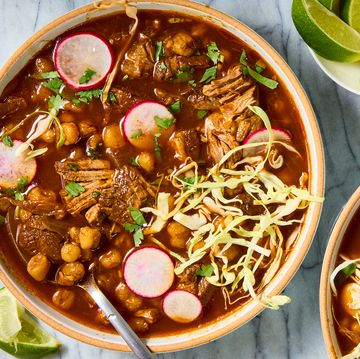
69 Recipes For Traditional Mexican Food

62 Chinese Food Recipes Anyone Can Pull Off
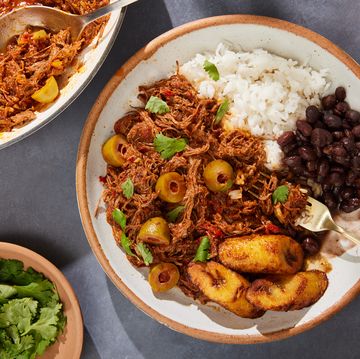
22 Latin American Dishes
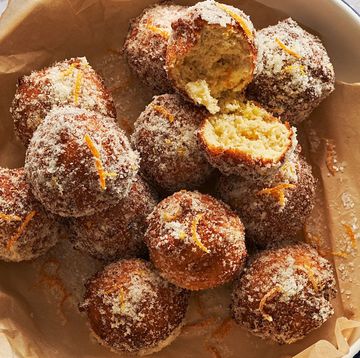
Zeppole
Advertisement - Continue Reading Below
Advertisement - Continue Reading Below

